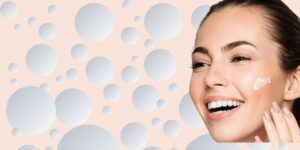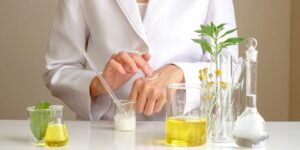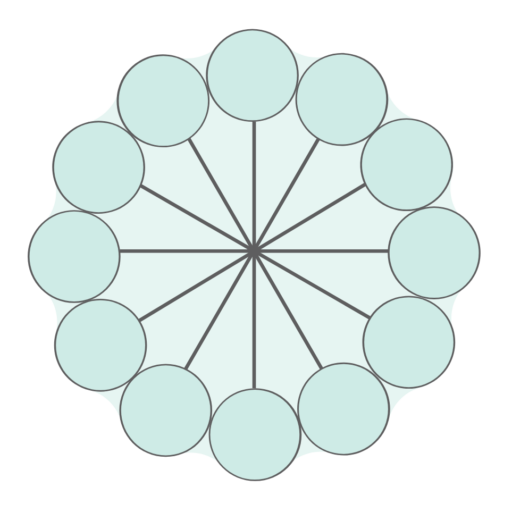Introduction
Capryloyl Salicylic acid, also known as Lipohydroxy Acid (LHA) is an organic derivative of Salicylic Acid. Recently developed, LHA has a unique lipophilic structure and action compared to other hydroxy acids. Studies prove that LHA is an effective antiaging hydroxy acid with high skin tolerability and fewer side effects.
Because LHA is a fat soluble hydroxy acid it is useful for people with oily skin and commonly used for the treatment of acne1. Being fat soluble also means that LHA is better able to penetrate the skin barrier and provide deeper peeling action.
Benefits for Your Skin
“As an anti-aging ingredient, LHA use has been shown to result in dermal thickening, with increases in glycosaminoglycan, hyaluronic acid, collagen, and elastin levels.”
The skincare benefits provided by LHA treatment are well established and well supported by professional scientific research. LHA offers the following skincare benefits:
1. Antimicrobial Action
The antibacterial action of salicylic acid has been known for many decades. Studies show that LHA also has anti-inflammatory, anti-comedogenic and antibacterial effects and these partly explain the success in acne treatment2.
2. Peeling Agent
LHA as a anti-aging facial chemical peeling agent provides high tolerability, safety and efficacy for treatment that is slightly better than glycolic acid3. It was found to reduce facial pigmentation and fine lines/wrinkles2.
3. Sensitive Skin and Rosacea
LHA is as effective as AHAs in the treatment of many skin conditions but is better tolerated by the skin3 than other hydroxy acids. Therefore it is more compatible with sensitive skin types than AHAs as they are more skin irritating.
4. Hyperpigmentation Treatment
With sustained treatment by LHA, lightening and even complete fading of hyperpigmentation can be achieved3.
5. Anti-aging, Photoaging Treatment
Antiaging benefits to photoaged skin of reduced wrinkles of reduced wrinkles and fine lines, the skin can be achieved with the daily application of LHA2,4. This can result in increase in dermal thickness and firmness that persists after application ceases. As well as providing antiaging benefits, LHA is also photoprotective4. It can provide UV protection for the skin and UV radiation.
6. Acne and Acne Scar Treatment
LHA is emerging as a product of choice for treatment of acne and acne scars2,5. Due to its unique lipophilic nature, LHA has strong exfoliating and comedolytic properties making it a good choice for acne treatment.
Discussion
“Presence of LHA 1% improves smoothness and firmness of the skin. The appearance in terms of clearness and healthy complexion is also improved.”6
Because of its unique structure and lipophilic nature, LHA has many antiaging skin and acne treating benefits coupled with mild action. LHA treatment can result in dermal thickening, with increases in glycosaminoglycan, hyaluronic acid, collagen, and elastin levels.
References
- 1.Uhoda E, Piérard-Franchimont C, Piérard G. Comedolysis by a lipohydroxyacid formulation in acne-prone subjects. Eur J Dermatol. 2003;13(1):65-68. https://www.ncbi.nlm.nih.gov/pubmed/12609785
- 2.Zeichner J. The Use of Lipohydroxy Acid in Skin Care and Acne Treatment. J Clin Aesthet Dermatol. 2016;9(11):40-43. https://www.ncbi.nlm.nih.gov/pubmed/28210389
- 3.Oresajo C, Yatskayer M, Hansenne I. Clinical tolerance and efficacy of capryloyl salicylic acid peel compared to a glycolic acid peel in subjects with fine lines/wrinkles and hyperpigmented skin. J Cosmet Dermatol. 2008;7(4):259-262. doi:10.1111/j.1473-2165.2008.00403.x
- 4.Saint-Léger D, Lévêque J, Verschoore M. The use of hydroxy acids on the skin: characteristics of C8-lipohydroxy acid. J Cosmet Dermatol. 2007;6(1):59-65. doi:10.1111/j.1473-2165.2007.00296.x
- 5.Pierard G, Rougier A. Nudging acne by topical beta-lipohydroxy acid (LHA), a new comedolytic agent. Eur J Dermatol. 2002;12(4):XLVII-XLVIII. doi:10.1016/j.jaad.2003.10.079
- 6.Lévêque J, Corcuff P, Gonnord G, et al. Mechanism of action of a lipophilic derivative of salicylic acid on normal skin. Skin Res Technol. 1995;1(3):115-122. doi:10.1111/j.1600-0846.1995.tb00030.x












